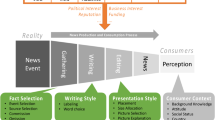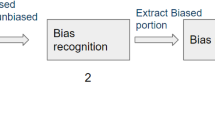Abstract
Most research on multi-document summarization explores methods that generate summaries based on queries regardless of the users’ preferences. We note that, different users can generate somewhat different summaries on the basis of the same source data and query. This paper presents our study on how to exploit the information regards how users summarized their texts. Models of different users can be used either separately, or in an ensemble-like fashion. Machine learning methods are explored in the construction of the individual models. However, we explore yet another hypothesis. We believe that the sentences selected into the summary should be coherent and supplement each other in their meaning. One method to model this relationship between sentences is by detecting actor–object relationship (AOR). The sentences that satisfy this relationship have their importance value enhanced. This paper combines ensemble summarizing system and AOR to generate summaries. We have evaluated this method on DUC 2006 and DUC 2007 using ROUGE measure. Experimental results show the supervised method that exploits the ensemble summarizing system combined with AOR outperforms previous models when considering performance in query-based multi-document summarization tasks.





Similar content being viewed by others
Notes
More details about DUC can be found at http://duc.nist.gov.
Newff function in MATLAB.
References
Amini MR, Usunier N, Gallinari P (2005) Automatic text summarization based on word-clusters and ranking algorithms. In: Losada DE, Fernández-Luna JM (eds) ECIR 2005, LNCS, vol 3408. Springer, Heidelberg, pp 142–156
Aone C, Gorlinsky J, Larsen B, Okurowski ME (1999) A Trainable Summarizer with Knowledge Acquired from Robust NLP Techniques. In: Mani I, Maybury M (eds) Advances in Automatic Text Summarization. MIT Press, Cambridge, pp 71–80
Carbonell GJ, Goldstein J (1998) The use of MMR, diversity-based re-ranking for reordering documents and producing summaries. In: Proceedings of the 21st annual international ACM SIGIR conference on research and development in information retrieval, Melbourne Australia, pp 335–336
Chuang WT, Yang J (2000) Extracting sentence segments for text summarization: a machine learning approach. In: Proceedings of the 23rd annual international ACM SIGIR conference on research and development in information retrieval, pp 152–159
Conroy JM, O’leary DP (2001) Text summarization via Hidden Markov Models. In: Proceedings of SIGIR ’01, New York, NY, USA, ACM SIGIR, pp 406–407
Diaz A, Gervás P (2007) User-model based personalized summarization. Inf Process Manag 43(6):1715–1734
Fisher S, Roark B (2006) Query-focused summarization by supervised sentence ranking and skewed word distributions. In: Document understanding conference. http://duc.nist.gov
Guo S, Sanner S (2010) Probabilistic latent maximal marginal relevance. In: Proceedings of the 33rd international ACM SIGIR conference on Research and development in information retrieval (SIGIR ’10). ACM, New York, NY, USA, pp 833–834
Kupiec J, Pedersen J, Chen F (1995) A Trainable Document Summarizer. In: Proceedings of the 18\({th}\) annual international conference ACM SIGIR, pp 68–73
Lin C-Y (1999) Training a selection function for extraction. In: Proceedings of the Eighteenth Annual International ACM Conference on Information and Knowledge Management (CIKM), Kansas City, Kansas, New York, NY, USA, ACM, pp 55–62
Lin C (2004) ROUGE: A Package for Automatic Evaluation of Summaries. In: Proceedings of workshop on text summarization, Branches Out, Post-conference workshop of ACL, Barcelona, Spain
Mani I, Bloedorn E (1998) Machine learning of generic and user-focused summarization. In: Proceedings of the 15th national/10th conference on artificial intelligence/innovative applications of artificial intelligence. AAAI Press, Madison, pp 820–826
De Marneffe M-C, MacCartney B, Manning C (2006) Generating Typed Dependency Parses from Phrase Structure Parses. In: Proceedings of Language Resources and Evaluation Conference
Neto JL, Freitas AA, Celso AA (2002) Kaestner. Automatic text summarization using a machine learning approach. In: Proceedings of the 16th Brazilian symposium on artificial intelligence: Advances in artificial intelligence. Springer-Verlag press, pp 205–215
Moro R, Bielikova M (2012) Personalized text summarization based on important terms identification. In: Proceeding of 23rd International conference of Database and Expert Systems Applications (DEXA), IEEE, Vienna, Austria, pp 131–135
Osborne M (2002) Using maximum entropy for sentence extraction. In: Proceedings of the ACL’02 Workshop on Automatic summarization, Morristown, NJ, USA, publisher: Association for Computing Linguistics, pp 1–8
Otterbacher J, Erkan G, Radev DR (2005) Using randomwalks for question-focused sentence retrieval. In: Proceedings of the human language technology conference/conference on empirical methods in natural language processing, publisher: Association for Computational Linguistics, pp 915–922
Ouyang Y, Li W, Li S, Lu Q (2014) Applying regression models to query-focused multi-document summarization. Inf Process Manag 47(2):227–237
Park S, Cha B (2008) Query Based Personalized Summarization Agent Using NMF and Relevance Feedback. In: Proceedings of the 2008 Third International Conference on Convergence and Hybrid Information Technology, vol 02 (ICCIT ’08), IEEE Computer Society, Washington, DC, USA, pp 779–784
Patil K, Brazdil P (2007) SumGraph: Text Summarization using Centrality in the Pathfinder Network. Int J Comput Sci Inf Syst 2(1):18–32
Porter M (1980) An algorithm for suffix stripping. Progr Electron Libr Inf Syst 14(3):130–137
Svore K, Vanderwende L, Burges C (2007) Enhancing single-document summarization by combining RankNet and third-party sources. In: Proceedings of the EMNLP-CoNLL, Association for Computational Linguistics (ACL), pp 448–457
Toutanova K, Brockett C, Gamon M, Jagarlamudi J, Suzuki H, Vanderwende L (2007) The PYTHY summarization system: Microsoft research at DUC 2007. In: Document understanding conference 2007. http://duc.nist.gov
Valizadeh M, Brazdil P (2013) Density-Based Graph Model for Multi-Document Summarization. In: Proceedings of Portuguese Conference on Artificial Intelligence, EPIA2013, Azores, Portugal, pp 480–491
Valizadeh M, Brazdil P (2015) Density-Based Graph Model Summarization: Attaining better Performance and Efficiency, to appear in journal of Intelligent Data Analysis, IOS press
Wan X, Yang J, Xiao J (2006) Using Cross-Document Random Walks for Topic-Focused Multi-Document Summarization. In: Proceedings of the IEEE/WIC/ACM International Conference on Web Intelligence, IEEE, pp 1012–1018
Wei F, Li W, Lu Q, He Y (2010) A document-sensitive graph model for multi-document summarization. Knowl Inf Syst 22(2):245–259
Wei F, He Y, Li W, Lu Q (2008) A Query-Sensitive Graph-Based Sentence Ranking Algorithm for Query-Oriented Multi-document Summarization. In: Proceeding of Information Processing (ISIP) on web mining and web-based application. IEEE, pp 9–13
Xu S, Jiang H, Lau F (2009) User-oriented document summarization through vision-based eye-tracking. In: Proceedings of the 2009 International Conference on Intelligent User Interfaces, Sanibel Island, Florida, USA. ACM, pp 7–16
Yang G, Wen D, Kinshuk Chen N, Sutinen E (2012) Personalized Text Content Summarizer for Mobile Learning: An Automatic Text Summarization System with Relevance Based Language Model. In: Proceeding of fourth international conference on technology for education, IEEE, IIIT-Hyderabad Hyderabad, India, pp 90–97
Acknowledgments
This work is funded (or part-funded) by the ERDF—European Regional Development Fund through the COMPETE Programme (operational programme for competitiveness) and by National Funds through the FCT—Fundação para a Ciência e a Tecnologia (Portuguese Foundation for Science and Technology) within project “FCOMP-01-0124-FEDER-022701”
Author information
Authors and Affiliations
Corresponding author
Additional information
Communicated by V. Loia.
Rights and permissions
About this article
Cite this article
Valizadeh, M., Brazdil, P. Exploring actor–object relationships for query-focused multi-document summarization. Soft Comput 19, 3109–3121 (2015). https://doi.org/10.1007/s00500-014-1471-x
Published:
Issue Date:
DOI: https://doi.org/10.1007/s00500-014-1471-x




